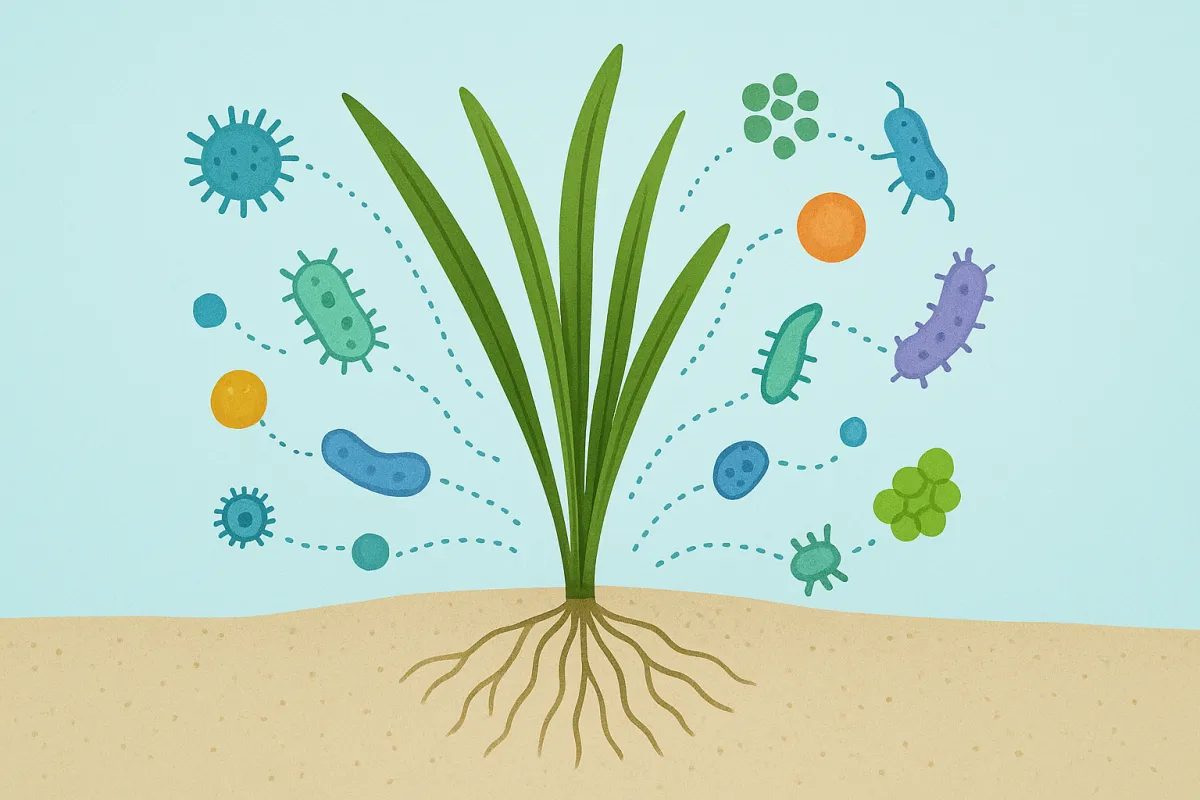
Seagrass restoration, microbes & Cyprus’ endangered green turtles 🌱🐢
“One can visualize no form of higher life without the existence of the microbe. They keep in constant circulation the chemical elements, essential to the continuation of plant and animal life.”
- Selman Waksman
In the Mediterranean, Posidonia oceanica meadows are disappearing - and Cyprus is no exception.

The loss of the slow-growing but ecologically critical seagrass that forms dense underwater meadows is not only a blow to coastal ecosystems but also to the endangered green turtle (Chelonia mydas), which relies almost exclusively on Posidonia oceanica as its food source.

Cyprus’ Lara Beach is one of the most important nesting sites for green turtles in the Mediterranean. Each summer, hatchlings emerge from the sand to begin their journey in waters where Posidonia meadows should be abundant. Yet as these meadows decline, so too does the availability of their only natural food, putting further pressure on this already fragile population.
"Posidonia oceanica restoration projects are helping protect biodiversity, store blue carbon, and support endangered species like the green turtle."
🌊 Seagrass Restoration in the Mediterranean
Across the Mediterranean, efforts to restore Posidonia oceanica meadows are gaining momentum as scientists, NGOs, and local communities recognize their role in biodiversity, coastal protection, and blue carbon storage. Projects in Spain, France, Italy, and Greece are trialing innovative transplant techniques, from seed-based planting to biodegradable anchoring systems, often coupled with community-led conservation and marine protected areas. Despite challenges such as slow growth rates, pollution, and anchoring damage, these initiatives highlight the growing commitment to safeguarding seagrass meadows as vital ecosystems for fisheries, climate resilience, and endangered species like the green turtle.
Despite challenges, innovative transplant methods and community action are giving these underwater meadows a chance to recover. A new study highlights a hidden, but powerful ally in seagrass. restoration: the microbiome. 🦠🧬

🌱 Why the Seagrass Microbiome Matters
Just like the human gut microbiome supports our health, the microbes living on and around seagrass roots are essential for plant survival. They regulate nutrient cycling (sulfur, nitrogen, carbon), protect plants from pathogens, and help them adapt to environmental stress. Without these microbial allies, transplanted seagrass struggles to establish, and entire meadows can fail to recover. Recognizing the microbiome as a partner in restoration opens up new possibilities for more resilient and sustainable marine ecosystems.
🔬 Inside the Research
Because natural recovery of Posidonia oceanica after disturbance is extremely limited, restoration through transplantation has become a key strategy. However, most restoration protocols traditionally measure success by visible shoot and root regrowth - overlooking the microbial communities that underpin plant health. A team of researchers at the University of Liège, led by Arnaud Boulenger, compared techniques for transplanting cuttings to the development of the root microbiome and growth of Posidonia. By profiling root-associated communities, they assessed how each method influenced microbiome assembly during the critical post-transplant phase.
To address this, the research team compared three common transplant techniques:
Metal staples: which pin cuttings directly into the sediment.
Coir fiber mats: biodegradable mats placed on the seabed, into which cuttings are fixed.
Potato-starch structures: a newer biodegradable approach that holds cuttings slightly above the sediment at first.
By sequencing DNA from root samples during the early post-transplant phase, the team profiled the root-associated microbiome and tracked how microbial communities assembled under each method.
The results revealed that direct root–sediment contact accelerated the recruitment of beneficial microbial guilds such as Chromatiales and Desulfobacterales, which are involved in sulfur detoxification and nitrogen cycling. These functions are vital for seagrass survival in the oxygen-poor sediments typical of the Mediterranean seabed.
In contrast, methods that delayed sediment contact slowed the establishment of these microbial partners, leaving plants more vulnerable during the critical first months after transplantation.
Therefore:
✅ Staple-fixed cuttings, which ensure immediate root–sediment contact, supported faster recruitment of beneficial microbes (e.g., Chromatiales, Desulfobacterales) that drive nutrient cycling and help plants establish.
⚠️ Methods delaying sediment contact slowed this process, reducing transplant success.
👉 Lesson for Cyprus: Restoration efforts (are there any??) should not only look at shoot growth but also optimize microbial colonization — a key factor for meadow recovery and, ultimately, the survival of our green turtles.
📜Reference: Boulenger, A., Aires, T., Engelen, A.H. et al., Microbiome matters: how transplantation methods and donor origins shape the successful restoration of the seagrass Posidonia oceanica. Environmental Microbiome 20, 99 (2025).

If you want to learn more about Cyprus' turtles
Visit the Innia-Lara Turtle Museum website or Facebook page
